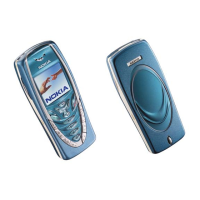7210 SAS-M, T, R6, R12, Mxp, Sx, S Basic System
Configuration Guide
System Management
3HE 17358 AAAB TQZZA © 2021 Nokia.
Use subject to Terms available at: www.nokia.com
287
The 7210 SAS can support a limited number of configured peers (possible master or
neighbor boundary clocks) and a limited number of discovered peers (slaves).These
peers use the unicast negotiation procedures to request service from the 7210 SAS
clock. A neighbor boundary clock counts for two peers (both a configured and a
discovered peer) toward the maximum limit.
The number of configured Ethernet ports is not restricted.
On the 7210 SAS-M, 7210 SAS-Mxp, 7210 SAS-R6, 7210 SAS-R12,
7210 SAS-Sx 1/10GE, and 7210 SAS-T, there are limits on the number of slaves
enforced in the implementation for unicast and multicast slaves. Refer to the scaling
guide for the appropriate release for the specific unicast message limits related to
PTP.
On the 7210 SAS-M, when multicast messaging on Ethernet ports is enabled, the
PTP load must be monitored to ensure that the load does not exceed the capabilities
(configured values). There are several commands that can be used for this
monitoring, including:
• show system cpu identifies the load of the PTP software process. If the
“capacity usage” reaches 100%, the PTP software process on the 7210 SAS is
at its limit of transmitting and/or receiving PTP packets.
Because the user cannot control the number of PTP messages received by the
7210 SAS over its Ethernet ports, the following statistics commands can be used to
identify the source of the message load:
• show system ptp statistics displays aggregate packet rates
Table 37 Local Clock Parameters When Profile is Set to g8275dot1-2014
Parameter Value
clockClass 165 – the 7210 SAS is configured as a boundary clock and
the boundary clock was previously locked to a grandmaster
with clock class of 6
248 – the 7210 SAS is configured as a boundary clock
255 – the 7210 SAS is configured as an ordinary clock slave
clockAccuracy FE – unknown
offsetScaledLogVariance FFFF – not computed
clockIdentity Chassis MAC address following the guidelines of section
7.5.2.2.2 of IEEE 1588-2008

